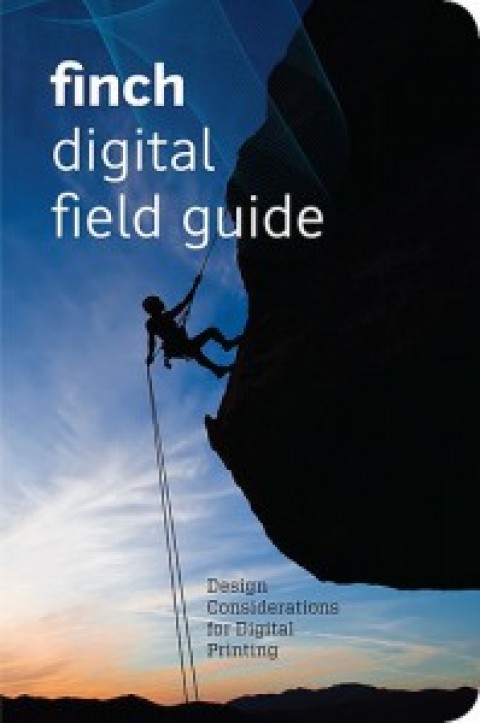 By Aaron Berman
By Aaron Berman
“Are they greedy or just stupid?” Variations of this question probably echo through the mind of every designer at least a few times each year, usually triggered by the same action: a client asking for design files at the end of a job.
Naturally it’s not the act of handing over our files itself that bothers us so much as the sneaking suspicion that they will be used a dozen different ways – and we’re not gonna see a dime on any of them.
The whole “gimme the files” situation is a delicate one, but it’s also easily addressed by following a few rules of thumb. First though, let’s take a quick look at the four biggest reasons this issue arises in the first place.
1. Lack of sophistication on the part of the designer. When you’re a relatively inexperienced designer, or just one who really needs the job in question, you’re more likely to give away the farm in any contract you sign. Afraid that you will either wreck this deal or discourage the client from using you in future, you sign the boilerplate contract they have handy. Very rarely are these going to be written to your advantage.
2. Lack of sophistication on the part of the client. Usually your client’s main occupation has little to do with understanding the intricacies of the design world. They may not understand that creatives charge on a sliding scale depending on usage of works provided. They may not even read the contract they’ve just signed with you.
3. Too little thought given to production. You’ve just designed a brochure for your client that looks beautiful on your screen, but are you 100% confident that it will look perfect on the printed page? Chances are good that you know far less about those last minute production tweaks than the printer. If there’s a major problem getting your PDFs to print properly, you’re likely to force the printer to miss the deadline, and you can look forward to a few nasty voicemails the following morning.
4. It’s the Digital Age and data just wants to be free. Yeah OK, that attitude is extremely annoying to those who make their living in the creation of intellectual property, but it’s the prevailing one. We’re all used to the idea of swapping music, films and images online. Until that changes (and, brace yourself, it won’t), you’re going to have clients who will want to try to use your design files to create ancillary materials.
What does the law say?
Making sure you get everything in writing before you even begin your project won’t prevent problems every time, but it will sure make any problems that do arise easier to handle.
To begin with, what are your legal rights over those files?
“The client doesn’t get legal rights to do more with the work than the level of usage you’ve granted to them,” explains Linda Joy Kattwinkel, an artist and an attorney specializing in copyright, trademark and arts law at the San Francisco firm Owen, Wickersham & Erickson PC. “If you have no written agreement, or your written document doesn’t mention copyright or licensed usage, your client gets only a limited license to use the work solely for the intended project.”
When disputes arise, usually “it means nobody’s ever talked about it, or it’s been in the writing but the client hasn’t paid attention or has a different assumption about what their legal rights are,” she says.
The law will give weight to the perceived intentions of the project when it comes to handing over your files. If you designed a logo for your client, for example, “then obviously there’s an intention that the client is going to be using that logo as long as they like it for their company identity… .So the license to use it is going to be broad. If they’re entitled to take a logo and resize it and move it to this piece vs. that piece, then they need to get the digital files, e.g., vector files, that give them that logo in the scalable, reusable format. Giving it to them simply as an embedded piece in final art (e.g., raster images in a print-ready PDF), is not going to do it.”
That being the case, be sure to name a fee large enough to cover widespread use of something like a logo, which is designed to be used in multiple formats.
Also get any changes to the project – and accompanying fees – in writing, too. Just an email exchange between yourself and the person in charge of the project – “I’ll let you use this illustration on your homepage for $200”; “That’s fine” – is adequate, Kattwinkel says.
Copyright your designs
It’s not enough to simply have your agreement in writing, you will want to register your designs with the U.S. Copyright Office.
For $35, you can protect every design “that you’re working on in a particular project under one application as long as they haven’t been published or distributed yet,” Kattwinkel says. “If you don’t have the registration, or at least an application on file, before a dispute, you’re not entitled to recover your attorneys fees if you have to sue, and that’s a big problem.”
While designers with modest means rightly fear the expense of going to court against a much better heeled client, Kattwinkel says those copyright registrations alone will cause many to back down before litigation begins.
“Unfortunately, I have to say that the less experienced either side is, the more likely this kind of dispute is going to happen. Unsophisticated small-business type clients who aren’t really familiar with having this kind of work done…they tend to be the most hostile. And they’re the ones that are the most surprised when they demand files and are told no.”
Work with the printer directly, if possible
The only argument for turning over your files that you can’t reasonably deny: the back-room magic that the printer will work on them to ensure optimum results on press. You can do a lot with PDFs, but you can’t do it all.
Of course, the client has no reasonable argument for taking possession of the files if that was not spelled out in the contract. If possible, include your working with the printer directly in the contract. Cast this as you being extremely diligent, wanting to ensure that nothing happens to the finished project between design and printing. This enables you to make the press room happy, keep those files out of your client’s hands, and even make a little extra on the deal. You did remember to include a fee for that, didn’t you?
—————

He is also author of the forthcoming book “Soap: The Inside Story of the Sitcom that Broke all the Rules.” Sadly, this is about all that can be said of him…
Boilerplate disclaimer: All information in this piece is provided for informational purposes only. Please consult a qualified attorney before taking legal action, don’t try this at home, keep out of reach of children, the big print giveth and the small taketh away…..












